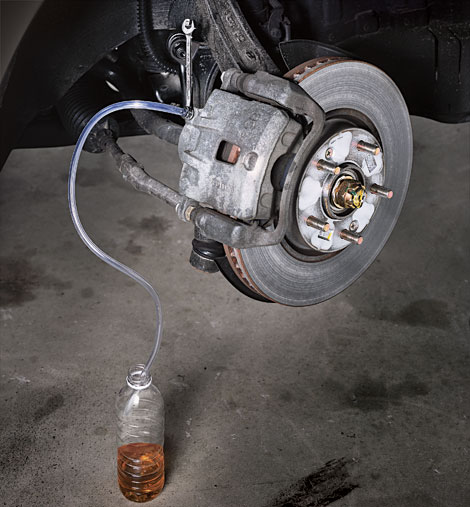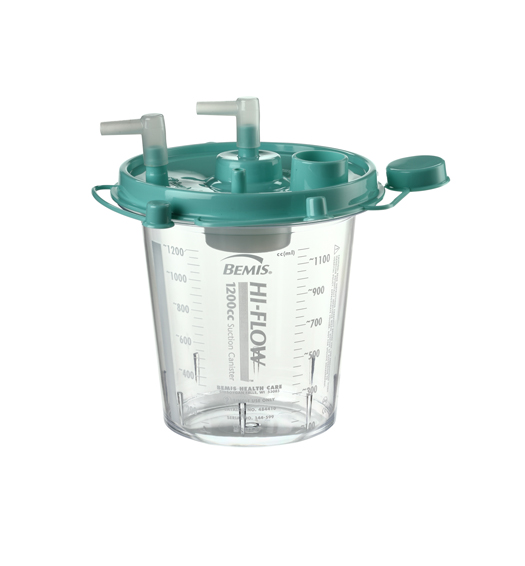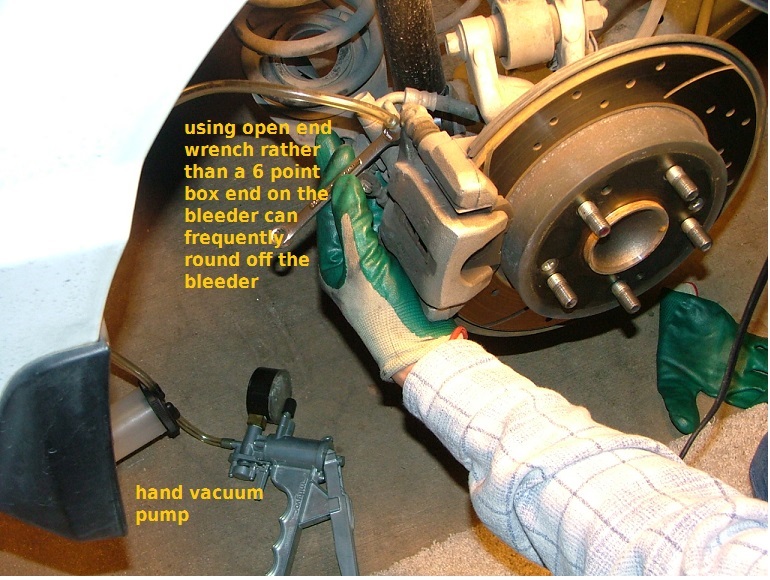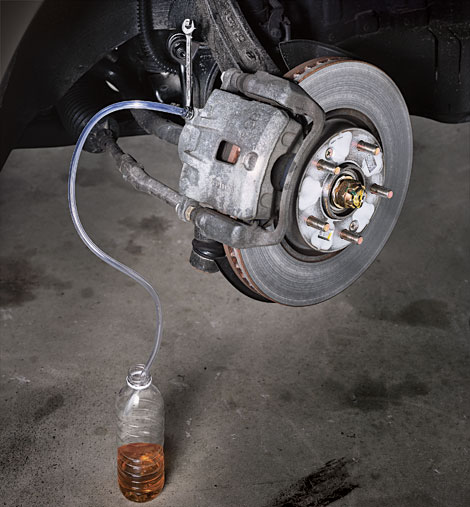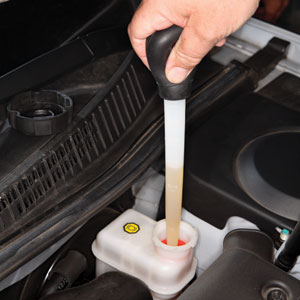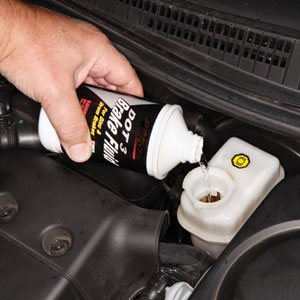read thru these links and sub links
viewtopic.php?f=27&t=26
http://www.classicperform.com/TechBook/ ... eshoot.htm
viewtopic.php?f=71&t=3556&p=9442&hilit=fluid+brake#p9442
http://auto.howstuffworks.com/auto-part ... brake5.htm
BTW its ALWAYS a good idea to completely replace old brake fluid and NEVER mix old and new brake fluid if it can be avoided simply because old brake fluid can contain moisture and might not be compatible with the new brake fluid
some of the newer synthetic brake fluids are far less prone to absorb moisture and boil at much higher temps that the OEM brake fluids
http://www.speedwaymotors.com/AFCO-6691 ... 65622.html
http://www.speedwaymotors.com/Wilwood-2 ... ,1386.html
BTW banjo fittings require a seal washer on both sides
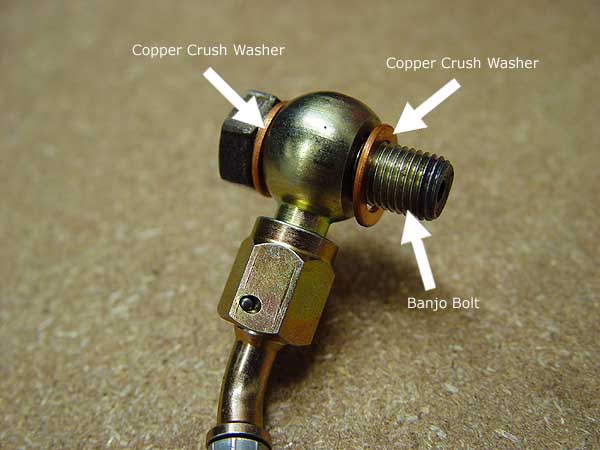
If your not getting full functioning brakes your obviously not getting full caliper or slave cylinder movement on the rear drums or calipers, somethings busted, clogged or corroded, or your low on brake fluid or somethings out of adjustment or badly worn, locating the cause won,t be difficult if you attack the problem logically and understand how the systems designed to function, and how to dis-assemble and inspect and posiably replace defective or worn, components, as a start point Id strongly suggest bleeding the brakes on all four wheels and replacing all the brake fluid with new DOT 4 , get a couple quarts and
read the links
having a lift or at least 4 good jack stands , which make working on brakes far easier once the cars frame is supported and the wheels are easily accessed.(don,t forget the brake the lug nuts loose before raising the car off the ground if you don,t have a lift or air impact gun)
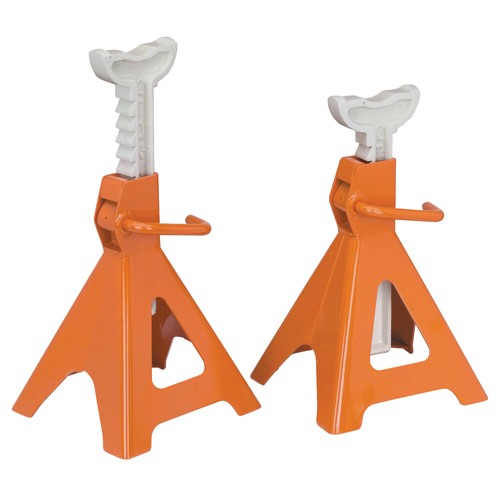
and a decent floor jack helps a great deal, knowing what your looking at and how to make adjustments helps and having a friend help is a huge plus.
BTW don,t forget to put ANTI-SEIZE on the lug threads before re-installing the lug nuts
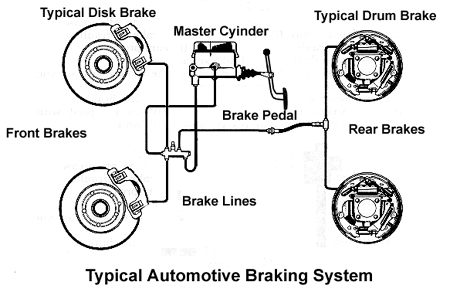
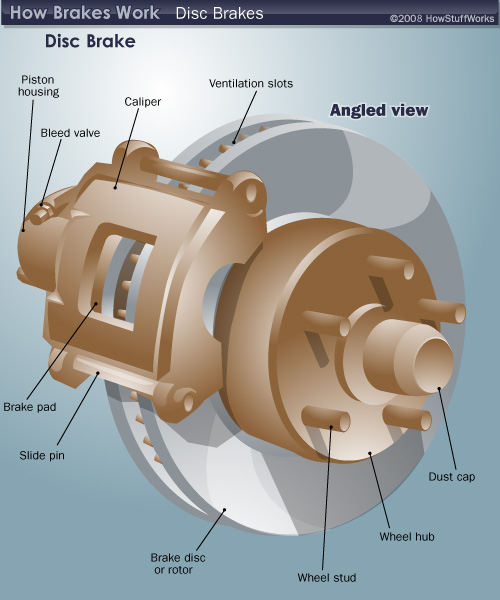
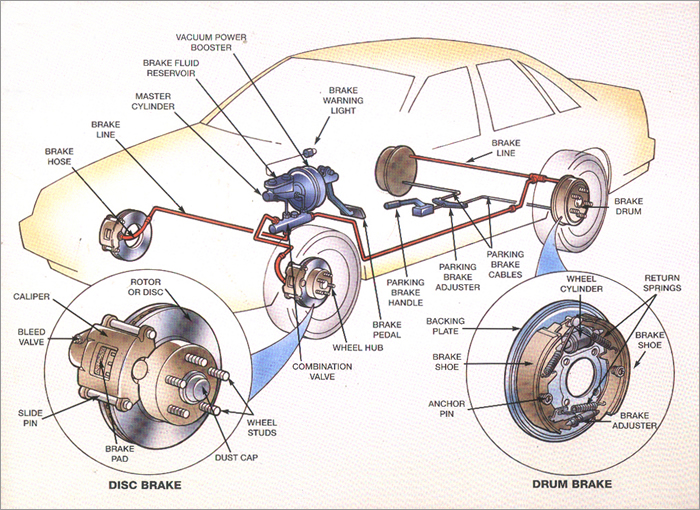
http://www.classicperform.com/TechBook/ ... eshoot.htm
http://autorepair.about.com/od/troubles ... brakes.htm
http://www.classicperform.com/TechBook/ ... eshoot.htm
http://www.consumerreports.org/cro/cars ... /index.htm
http://www.aa1car.com/library/pwrsteer.htm
http://www.afcoracing.com/tech_pages/shoot.shtml
http://www.popularmechanics.com/automot ... 13448.html
http://www.stoptech.com/tech_info/wp_bedintheory.shtml
http://www.stoptech.com/tech_info/wp_bedinstock.shtml
http://home.att.net/~m.prendergast-alli ... AKCHRT.htm
http://www.sjdiscounttools.com/fow72-234-223.html
http://auto.howstuffworks.com/auto-part ... brake5.htm
http://www.clarks-garage.com/shop-manual/ts-07.htm
http://www.pjwauto.com/troubleshooting- ... lems.shtml
http://www.ehow.com/topic_3454_car-brak ... guide.html
http://www.fordf150.net/howto/brakerepair.php
http://www.lbfun.com/warehouse/tech_inf ... Brakes.pdf
viewtopic.php?f=27&t=26
http://www.classicperform.com/TechBook/ ... eshoot.htm
viewtopic.php?f=71&t=3556&p=9442&hilit=fluid+brake#p9442
http://auto.howstuffworks.com/auto-part ... brake5.htm
BTW its ALWAYS a good idea to completely replace old brake fluid and NEVER mix old and new brake fluid if it can be avoided simply because old brake fluid can contain moisture and might not be compatible with the new brake fluid
some of the newer synthetic brake fluids are far less prone to absorb moisture and boil at much higher temps that the OEM brake fluids
http://www.speedwaymotors.com/AFCO-6691 ... 65622.html
http://www.speedwaymotors.com/Wilwood-2 ... ,1386.html
BTW banjo fittings require a seal washer on both sides

If your not getting full functioning brakes your obviously not getting full caliper or slave cylinder movement on the rear drums or calipers, somethings busted, clogged or corroded, or your low on brake fluid or somethings out of adjustment or badly worn, locating the cause won,t be difficult if you attack the problem logically and understand how the systems designed to function, and how to dis-assemble and inspect and posiably replace defective or worn, components, as a start point Id strongly suggest bleeding the brakes on all four wheels and replacing all the brake fluid with new DOT 4 , get a couple quarts and
read the links
having a lift or at least 4 good jack stands , which make working on brakes far easier once the cars frame is supported and the wheels are easily accessed.(don,t forget the brake the lug nuts loose before raising the car off the ground if you don,t have a lift or air impact gun)

and a decent floor jack helps a great deal, knowing what your looking at and how to make adjustments helps and having a friend help is a huge plus.
BTW don,t forget to put ANTI-SEIZE on the lug threads before re-installing the lug nuts



http://www.classicperform.com/TechBook/ ... eshoot.htm
http://autorepair.about.com/od/troubles ... brakes.htm
http://www.classicperform.com/TechBook/ ... eshoot.htm
http://www.consumerreports.org/cro/cars ... /index.htm
http://www.aa1car.com/library/pwrsteer.htm
http://www.afcoracing.com/tech_pages/shoot.shtml
http://www.popularmechanics.com/automot ... 13448.html
http://www.stoptech.com/tech_info/wp_bedintheory.shtml
http://www.stoptech.com/tech_info/wp_bedinstock.shtml
http://home.att.net/~m.prendergast-alli ... AKCHRT.htm
http://www.sjdiscounttools.com/fow72-234-223.html
http://auto.howstuffworks.com/auto-part ... brake5.htm
http://www.clarks-garage.com/shop-manual/ts-07.htm
http://www.pjwauto.com/troubleshooting- ... lems.shtml
http://www.ehow.com/topic_3454_car-brak ... guide.html
http://www.fordf150.net/howto/brakerepair.php
http://www.lbfun.com/warehouse/tech_inf ... Brakes.pdf

